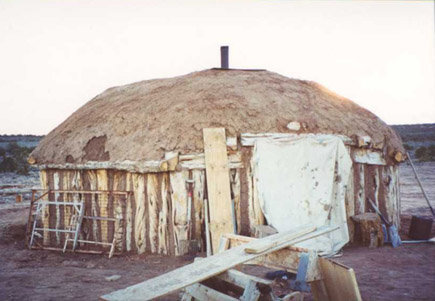New Mexico first state to adopt Navajo textbook
About 10 school districts in New Mexico provide Navajo language instruction. Out of seven American Indian languages that were taught in the public school system during the 2006-07 school year, 5,024 students were learning Navajo.
In the Navajo culture, certain topics—such as how to build a hogan or cradle board and how to care for cattle and horses—should be addressed by men. Other topics, including the preparation of food, clothing and caring for children, should be addressed by women.
It also includes pictures of people who have lived on the Navajo reservation, which stretches into New Mexico, Utah and Arizona. Yazzie said she looks forward to students sharing the book with Navajo elders and "pretty soon conversation will be sparking around fires."







